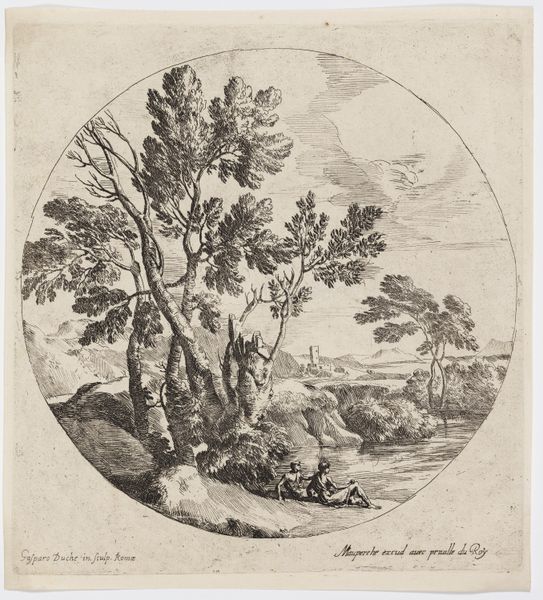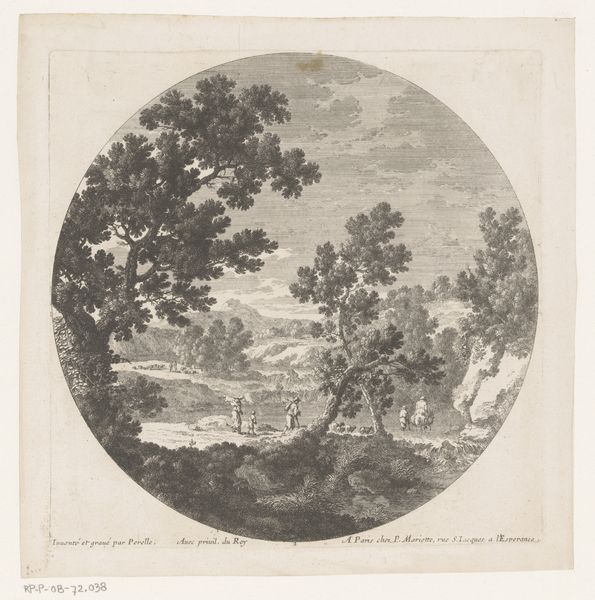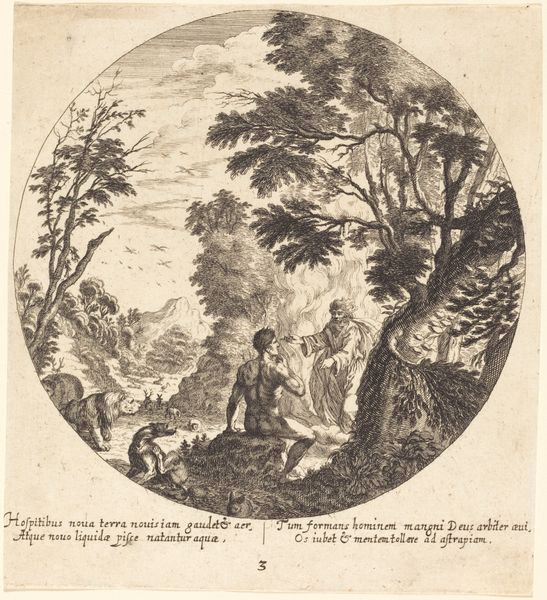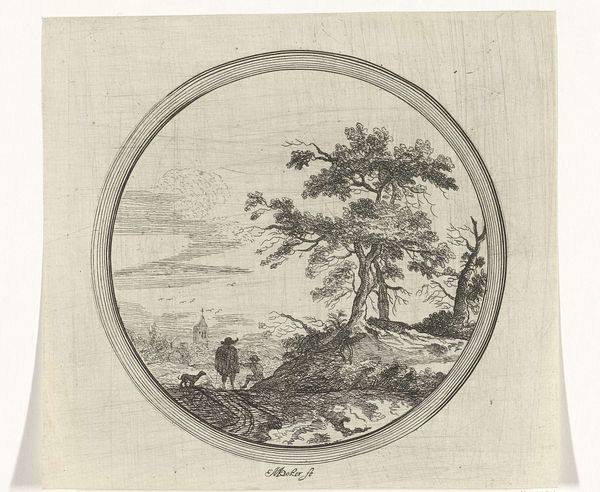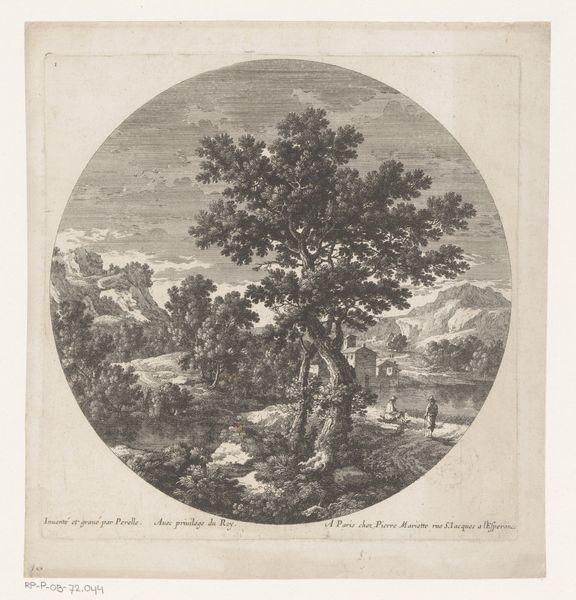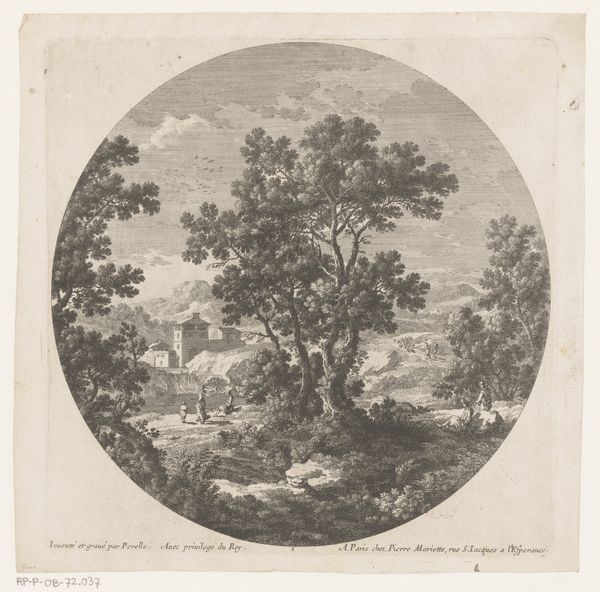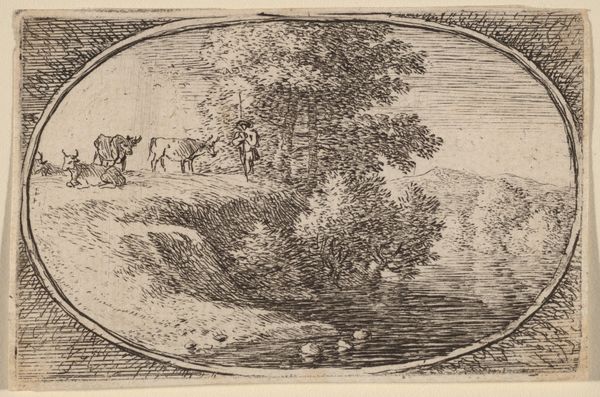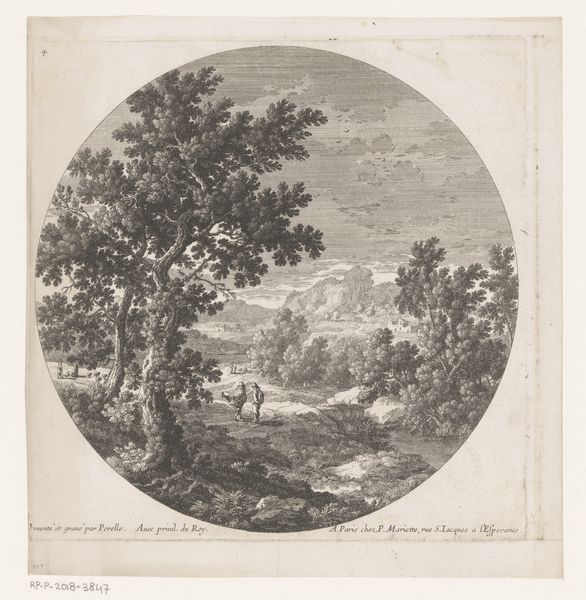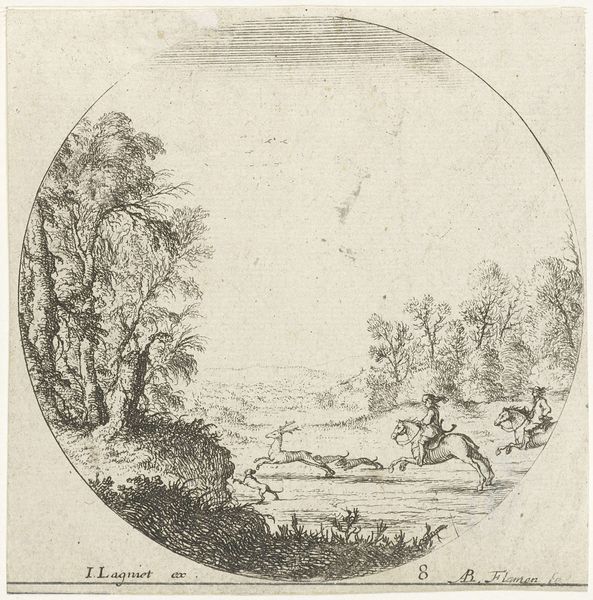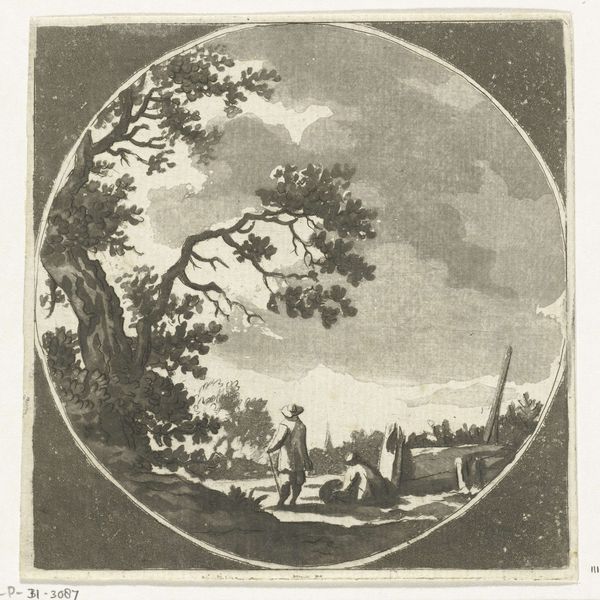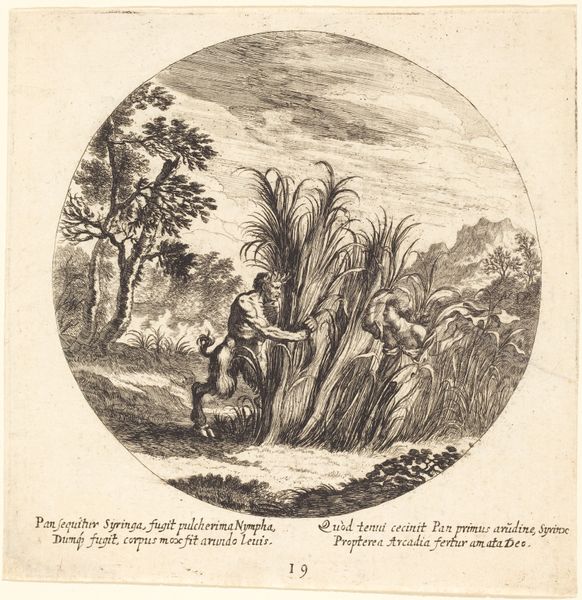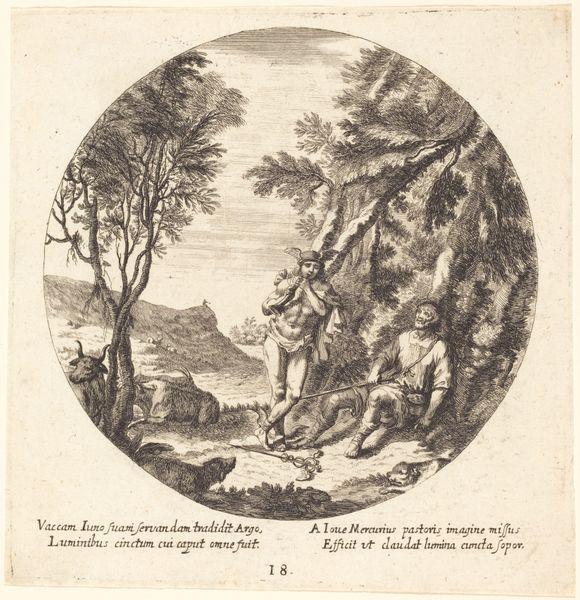
drawing, print, engraving
#
drawing
#
baroque
# print
#
landscape
#
genre-painting
#
history-painting
#
engraving
Dimensions: Image diameter: 4 13/16 in. (12.3 cm) Plate: 5 1/4 × 5 in. (13.4 × 12.7 cm) Sheet: 5 15/16 × 5 5/8 in. (15.1 × 14.3 cm)
Copyright: Public Domain
Editor: This delicate engraving, "Landscape with the Flight into Egypt," is from the 17th century, crafted by an anonymous artist. I'm really struck by the circular composition; it feels almost like peering through a looking glass. How do you interpret this work, especially its blend of landscape and biblical narrative? Curator: The circular frame indeed creates an intimate viewing experience. The scene is literally framed by a specific worldview. What draws my eye is how the anonymous artist embeds a very vulnerable Holy Family – a detail that risks disappearing into an imposing landscape. Look at the broken tree— a powerful, yet ambiguous symbol. What does a fractured tree represent, set against the backdrop of the Flight into Egypt? Editor: I suppose it could symbolize hardship and broken expectations? Like the danger and uncertainty of their journey? Curator: Precisely! And, by extension, the perils faced by all refugees, all displaced peoples. Think about how this symbol might resonate across time. We're observing the continuity of human experience through these visual cues. Consider also the stark contrast between the protective, leafy tree and the bare, broken one. Does this tell us something about security versus precarity? Editor: I hadn't considered it that deeply. So, the landscape isn't just a pretty backdrop; it's loaded with symbolic meaning. It shows resilience with some form of life. Curator: Absolutely. Baroque art often uses landscape to mirror inner emotional states. The "Flight into Egypt," then, transcends a specific historical event; it becomes a meditation on vulnerability, displacement, and finding sanctuary in a dangerous world, visually coded for audiences then, and decipherable even now. What have you taken away from this analysis? Editor: The power of symbols to connect us to history – how a landscape can speak volumes about the human condition across centuries. Curator: And the artist's ability to subtly weave these threads together, creating layers of meaning within a seemingly simple image. It really highlights how looking closely reveals a much larger cultural memory, doesn't it?
Comments
No comments
Be the first to comment and join the conversation on the ultimate creative platform.
